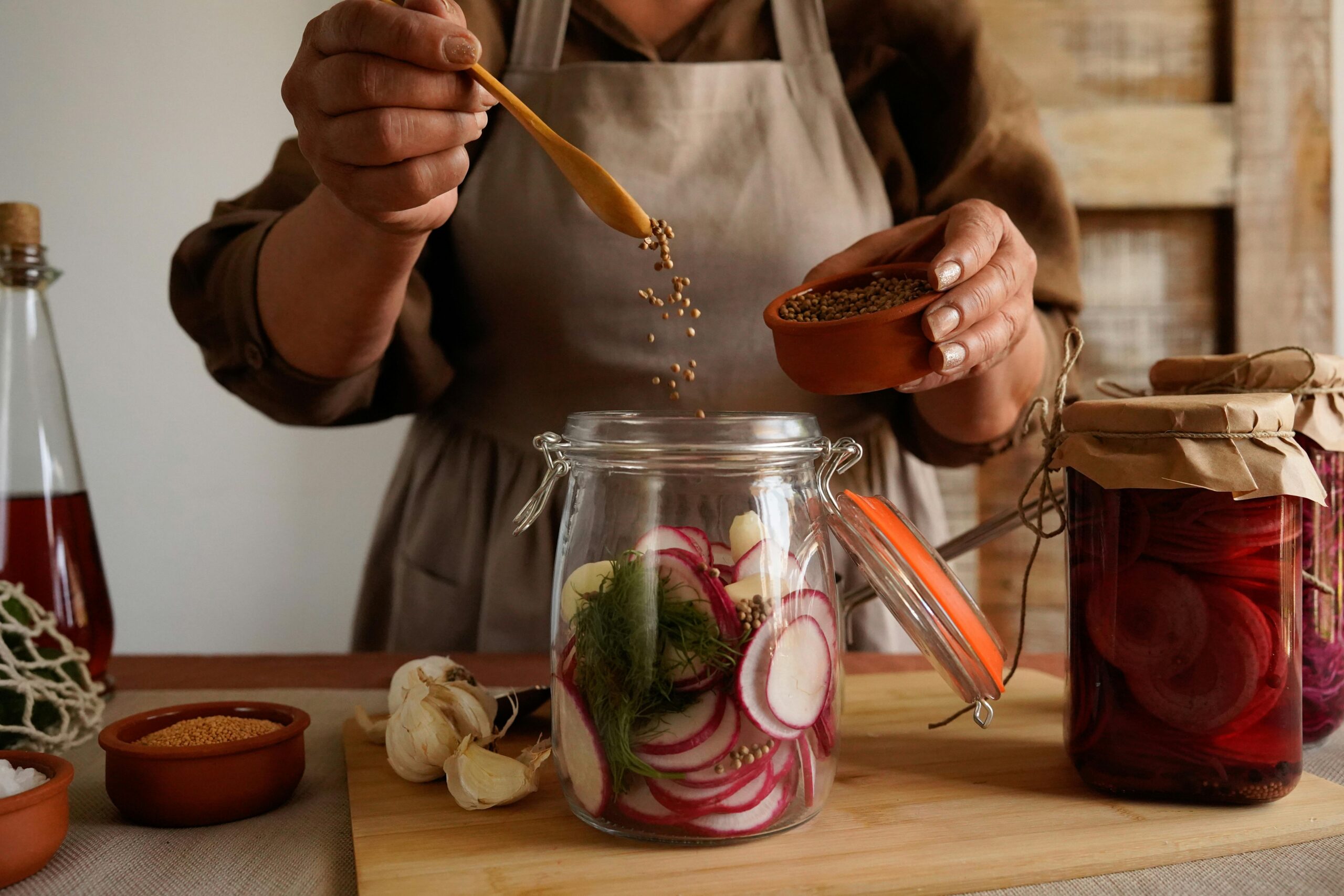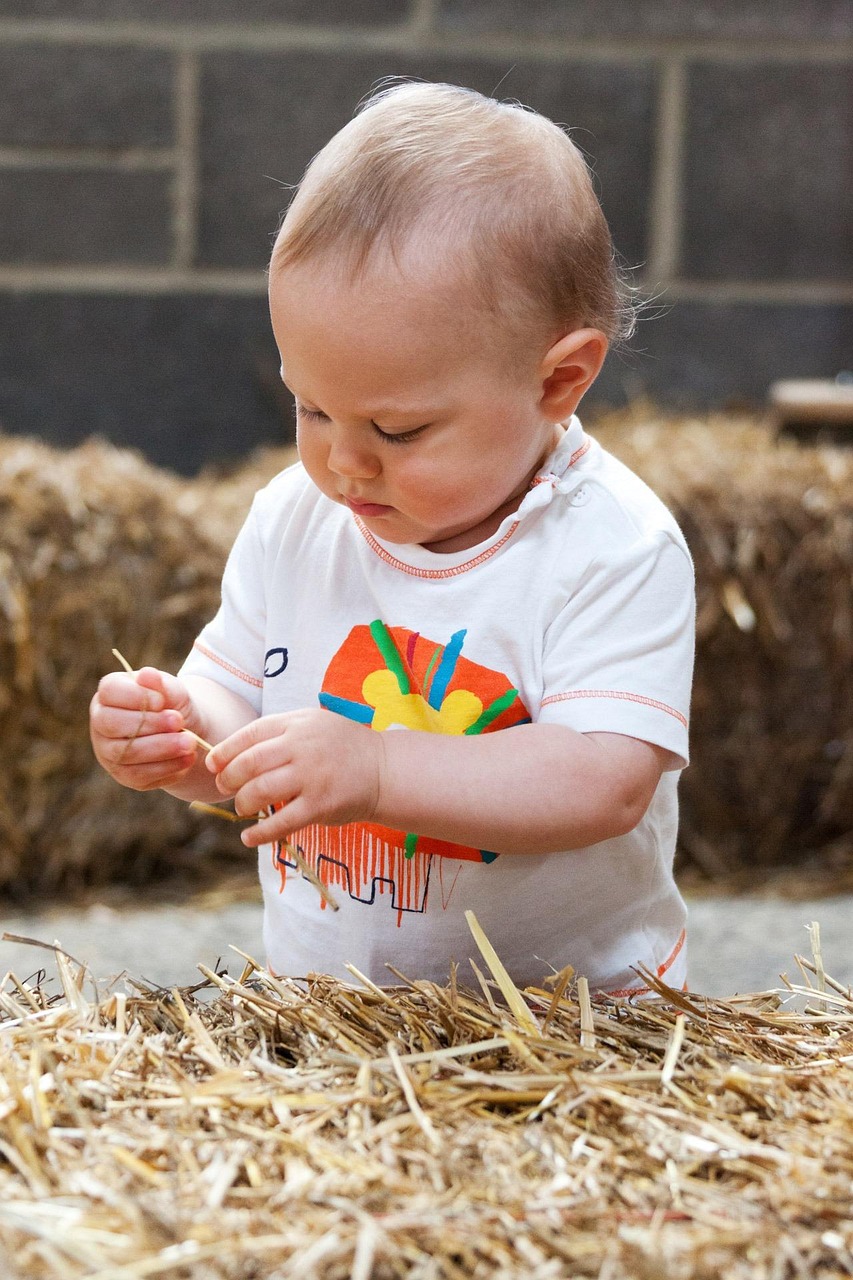Fermentation has been a cornerstone of food preservation and flavor enhancement for centuries. Today, it’s making a comeback as people rediscover its health benefits and unique taste profiles. Whether you’re a complete beginner or looking to expand your skills, learning to make sauerkraut, kimchi, and kombucha at home is a rewarding and delicious journey.
Why Fermentation?
Fermentation isn’t just about making food last longer—it’s a natural process that enhances flavor, boosts gut health, and introduces beneficial probiotics into your diet.
- Health Benefits:
- Improves digestion by adding probiotics to your gut.
- Enhances nutrient absorption.
- Supports a strong immune system.
- Sustainability:
- Reduces food waste by preserving fresh produce.
- Cuts down on store-bought packaging waste.
1. Sauerkraut: The Gateway Ferment
What Is Sauerkraut?
Sauerkraut is fermented cabbage with a tangy, salty flavor. It’s one of the simplest ferments to make and a great starting point for beginners.
Ingredients:
- 1 medium cabbage (green or red).
- 1–2 tablespoons of salt (non-iodized, like sea salt or kosher salt).
How to Make It:
- Slice and Salt: Finely shred the cabbage and mix it with salt in a large bowl. Massage the cabbage until it starts to release liquid.
- Pack It: Pack the cabbage tightly into a clean glass jar or crock, pressing down to submerge it in its brine.
- Ferment: Cover the jar with a clean cloth or lid (loosely) and let it sit at room temperature for 1–3 weeks, checking daily to ensure the cabbage stays submerged.
- Taste and Store: When it reaches your preferred tanginess, transfer it to the fridge to slow fermentation.
Pro Tip:
- Add caraway seeds or shredded carrots for extra flavor and texture.
2. Kimchi: Spicy, Tangy, and Packed with Flavor
What Is Kimchi?
Kimchi is a Korean staple made from fermented vegetables, most commonly napa cabbage and radishes, seasoned with a spicy, umami-rich paste.
Ingredients:
- 1 napa cabbage.
- 1 daikon radish (optional).
- 2 tablespoons salt.
- 4–6 garlic cloves (minced).
- 1 tablespoon ginger (grated).
- 3–5 tablespoons gochugaru (Korean red pepper flakes).
- 2 tablespoons fish sauce or soy sauce.
- 1–2 teaspoons sugar.
How to Make It:
- Prepare the Vegetables: Chop the napa cabbage into large chunks and sprinkle with salt. Let it sit for 1–2 hours until it softens, then rinse and drain.
- Make the Paste: Mix garlic, ginger, gochugaru, fish sauce, and sugar into a thick paste.
- Combine: Coat the cabbage and daikon radish (if using) with the paste, massaging it into every layer.
- Pack and Ferment: Pack tightly into a glass jar, ensuring the vegetables are submerged in the brine. Let it ferment at room temperature for 3–7 days.
- Taste and Adjust: Once it reaches your desired tanginess, refrigerate and enjoy.
Pro Tip:
- Experiment with additions like green onions, carrots, or even fruits like pears for sweetness.
3. Kombucha: The Fizzy Tea Elixir
What Is Kombucha?
Kombucha is a fermented tea beverage made with a SCOBY (symbiotic culture of bacteria and yeast). It’s fizzy, slightly sweet, and customizable with endless flavor options.
Ingredients:
- 8 cups water.
- 1 cup sugar.
- 4 black or green tea bags.
- 1 SCOBY.
- 1 cup starter tea (unflavored kombucha from a previous batch or store-bought).
How to Make It:
- Brew the Tea: Boil water, dissolve sugar, and steep tea bags. Let it cool completely.
- Combine: Pour the tea into a clean glass jar, add the starter tea, and place the SCOBY on top.
- Ferment: Cover with a breathable cloth and secure with a rubber band. Let it ferment at room temperature for 7–14 days, depending on your taste preference.
- Bottle and Flavor: Remove the SCOBY, pour the kombucha into bottles, and add fruits, herbs, or spices for flavor. Let it sit for 2–3 days to carbonate before refrigerating.
Pro Tip:
- Start simple with flavors like ginger or berry before experimenting with more complex combinations.
Common Fermentation Tips
- Use Clean Equipment: Sterilized jars and utensils help prevent unwanted bacteria.
- Keep an Eye on the Process: Check your ferments daily to ensure they’re submerged in brine and developing properly.
- Experiment: Adjust ingredients and fermentation times to suit your taste.
Conclusion
Fermenting foods like sauerkraut, kimchi, and kombucha is a fun, rewarding way to enhance your meals and support your health. With just a few simple ingredients and some patience, you can create delicious, probiotic-rich foods right in your kitchen.
Call to Action:
Ready to get started? Share your favorite fermentation recipe or ask questions in the comments below. Don’t forget to subscribe for more DIY fermentation tips and tricks!




Leave a Reply